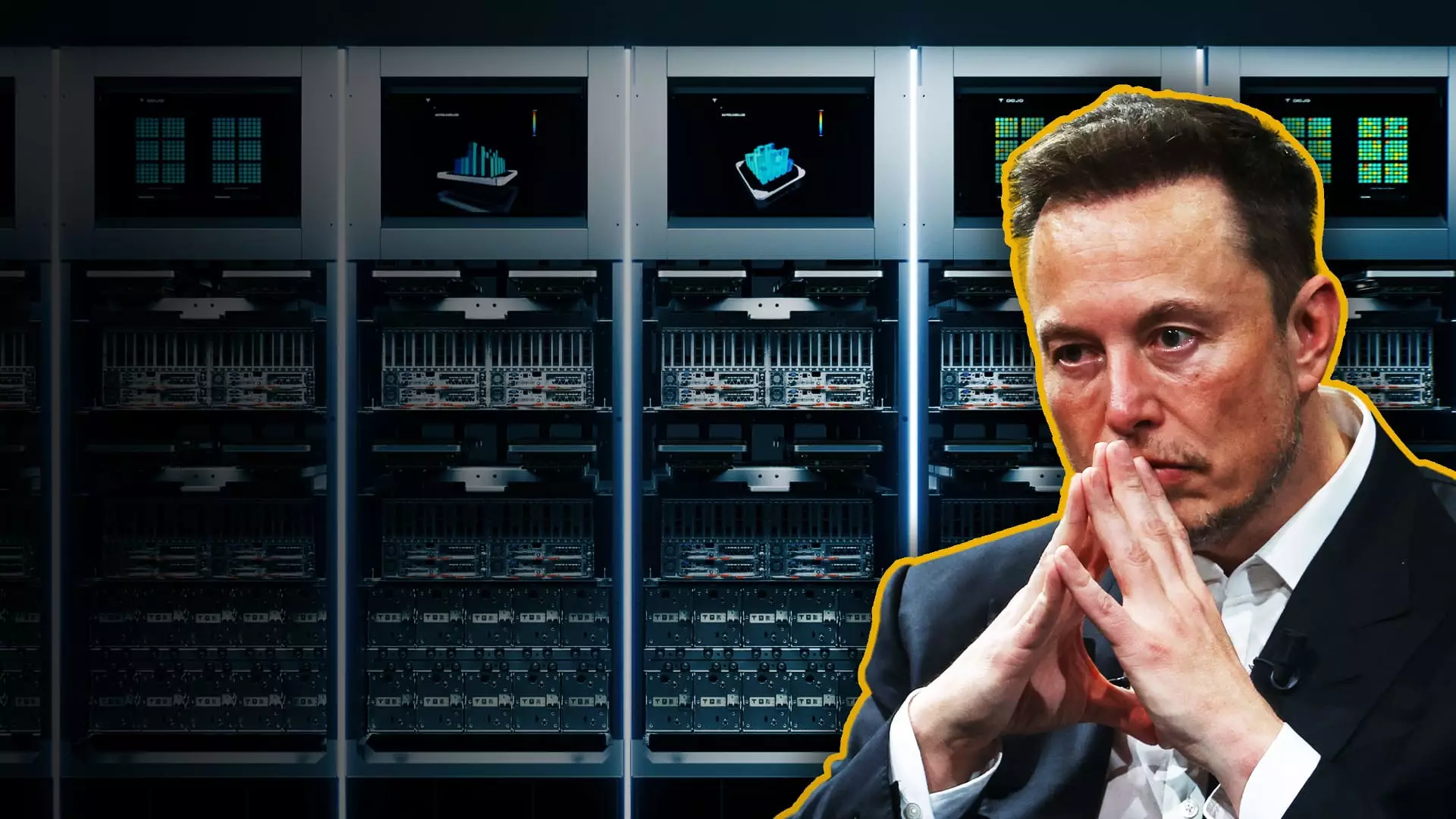Elon Musk, the visionary behind Tesla and the burgeoning artificial intelligence firm xAI, is setting the stage for a technological revolution. His assertion that Tesla is primarily an AI and robotics company—rather than merely a car manufacturer—highlights his intention to integrate advanced technologies into every facet of the company. As we delve deeper into Musk’s ambitious projects, particularly the development of supercomputers, it becomes clear that he envisions a future where AI not only enhances existing products but fundamentally redefines industry standards.
At the core of Musk’s AI ambitions is Tesla’s custom-built supercomputer, Dojo, which aims to harness massive amounts of data collected from Tesla vehicles. With the announcement of a $500 million investment to build this computing powerhouse in Buffalo, New York, Musk is positioning Tesla to become a leader in AI-driven vehicle technology. Dojo’s primary function will involve processing and training AI models by utilizing the rich data stream generated from over five million Tesla cars, each equipped with multiple cameras.
This extensive data collection is not merely for improving Tesla’s driver-assistance systems like Autopilot and Full Self-Driving (FSD); it represents a critical step toward achieving full vehicle autonomy. However, it’s important to note that the current versions of Autopilot and FSD still require driver oversight. This limitation has drawn scrutiny and criticism, particularly concerning claims of capabilities that have yet to be fully realized.
Competitive Landscape in Autonomous Technology
Despite Tesla’s iconic status and innovative spirit, it faces formidable competition from a growing number of companies devoted to developing autonomous vehicle technologies. Giants such as Waymo, General Motors’ Cruise, and Amazon’s Zoox are already operational in the market, working on delivering fully autonomous taxis. Foreign competitors like Didi and Baidu in China relentlessly pursue advancements in this arena, adding pressure on Tesla to accelerate its timelines.
This competitive landscape raises the stakes for Musk and Tesla, especially as they grapple with less than stellar earnings reports. The push for successful robotaxi deployment signifies more than just market competition; it’s tied to the company’s financial evaluation, which relies on perceptions of future profitability in autonomous transport.
The Role of Cortex and Future Innovations
Also significant in Tesla’s AI strategy is the Cortex supercomputer cluster, being developed at the company’s Austin headquarters. Together with Dojo, Cortex represents Tesla’s extensive commitment to advancing AI technology—not only to enhance driving features but also to push the boundaries of what’s possible in robotics. As Musk comments on the utility of these supercomputers, he envisions their application extending to the company’s humanoid robot, Optimus, set to debut in Tesla’s factories in 2024.
Musk’s $10 billion investment in AI this year underscores his unwavering commitment to staying at the forefront of technological advancements. The resources allocated to supercomputers like Dojo and Cortex are expected to yield substantial returns as they refine algorithms that can ultimately lead to fully autonomous vehicles and smart robotics.
While Tesla’s ambitions unfold, Musk is simultaneously spearheading xAI, which aims to develop advanced language models and AI applications. Launched in 2023, xAI is determined to carve a niche in an arena dominated by tech behemoths like OpenAI, Microsoft, and Google. Musk’s criticism of OpenAI, particularly post his departure in 2018, fuels his motivation to create an alternative that aligns with his vision for ethical AI development.
The newly announced supercomputer in Memphis, Tennessee, known as Colossus, serves as the infrastructure for training xAI’s chatbot, Grok. This initiative reflects not only Musk’s determination to innovate but also his intention to counterbalance the concentration of power within the AI sector—a sentiment that resonates as debates about the ethical implications of AI continue to escalate.
Elon Musk’s endeavors in building supercomputers and advancing AI through Tesla and xAI signal a transformative period in technology. These efforts reveal his commitment to pushing the limits of what’s achievable, from autonomous vehicles to humanoid robotics. While challenges remain—particularly regarding regulatory scrutiny and fierce market competition—Musk’s vision and financial backing suggest that he is determined to pave the way for an AI-driven future, one that could redefine transportation and robotics as we know them.


Leave a Reply